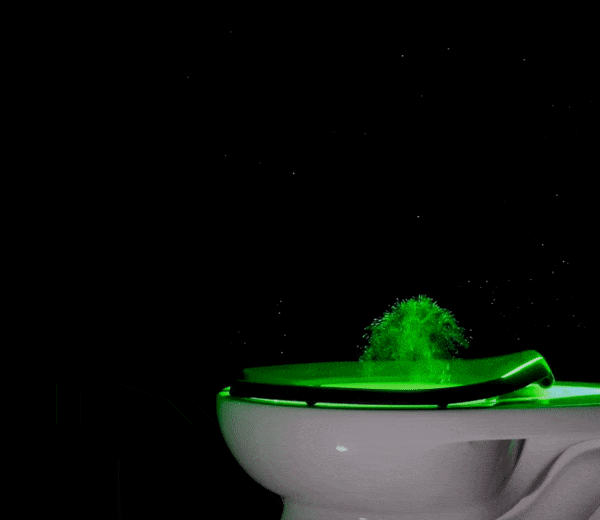Microbes, Bacteria, Viruses
Scientists Turn to Human Ancestors' DNA in Search for New Antibiotics
Microbe-fighting molecules that once existed in Neanderthals and Denisovans have been re-created in the lab and tested in mice
Scientists Revive 46,000-Year-Old Roundworms From Siberian Permafrost
The nematodes had survived in a state of slowed metabolism called cryptobiosis, according to a new paper
Honey Made by Ants Could Protect Against Bacteria and Fungi
Australian honeypot ants create and store a sugary substance that may kill microbes, per a new paper that aligns with Indigenous knowledge
Scientists Reveal Why Asp Caterpillar Stings Are So Excruciatingly Painful
A toxin in the insect's venom, which can punch a hole in cell walls, could inspire new drug-delivery methods in humans
Microplastic Exposure Makes Microbes More Virulent
Laboratory research shows that someway, somehow, PVC plastic breeds antimicrobial resistance
Coral Reefs Host a Vast Diversity of Microbes
A two-year expedition at sea uncovered more than half a million varieties of microbial life in Pacific reef-dwelling organisms
Sick Workers Connected to 41 Percent of Food Poisoning Outbreaks, CDC Reports
Paid sick leave policies could reduce the risk of spreading disease, notes the agency
Scientists Discover Microbes That Could Revolutionize Plastic Recycling
These bacteria and fungi can break down certain plastics at cool temperatures, saving money and energy compared to some current methods
Bird Flu Vaccine Approved in Emergency Effort to Save California Condors
The virus has set back the endangered birds' recovery, but a newly hatched chick is flu-free and being raised by veterinarians
First Cases of Drug-Resistant Ringworm Found in the U.S.
The two patients—both in New York City—developed itchy rashes that did not go away with typical antifungal medications
Twenty Endangered California Condors Die Amid Avian Flu Outbreak
Scientists fear the deaths could set back the slow-breeding birds' recovery by at least a decade
When Should I Get Another Covid Booster?
Here’s what you need to know about getting your next vaccine
Probiotics May Help Corals Fight a Dangerous Disease Off Florida’s Coast
The new treatment shows promise in lab experiments
These Flesh-Eating Bacteria Are Thriving Because of Climate Change
New research finds that infections caused by Vibrio vulnificus have increased over the last 30 years and expanded to new geographic areas
Drug-Resistant Fungal Infections Are on the Rise in the U.S.
A yeast called Candida auris has sickened more people over a wider area during the pandemic
Man's Rare Tickborne Illness Was Caused by an Unexpected Bacteria
Until now, the bacteria from a lone star tick had not been reported to cause tickborne relapsing fever
Scientists Name New Fungus-Killing Compounds After Keanu Reeves
The bacteria are highly effective against a common plant pest and a pathogen that infects humans
'Superbugs' Could Kill Up to Ten Million Additional People Each Year by 2050
A new U.N. report warns that climate change, pollution and biodiversity loss are helping create pathogens that can evade our medications
Here's What Really Happens When You Flush a Toilet
Using lasers and cameras, scientists visualized the plume of tiny, aerosolized particles ejected from commercial toilets during flushing
Scientists Revive 48,500-Year-Old Virus, Setting World Record
As temperatures rise because of climate change, melting permafrost could cause dormant diseases to re-emerge, researchers warn
Page 2 of 18
:focal(2562x1708:2563x1709)/https://tf-cmsv2-smithsonianmag-media.s3.amazonaws.com/filer_public/b4/e3/b4e3e38f-209c-42ac-923b-69856b91588f/gettyimages-1240329859.jpg)
:focal(2264x1509:2265x1510)/https://tf-cmsv2-smithsonianmag-media.s3.amazonaws.com/filer_public/d2/e2/d2e22cdf-0530-4db2-afa9-a4f47142eda0/gettyimages-1190593824.jpg)
:focal(2550x1688:2551x1689)/https://tf-cmsv2-smithsonianmag-media.s3.amazonaws.com/filer_public/d3/f2/d3f2007f-c8bd-4f00-a953-342d40d95cb9/gettyimages-157890977.jpg)
:focal(2016x1517:2017x1518)/https://tf-cmsv2-smithsonianmag-media.s3.amazonaws.com/filer_public/7e/11/7e117169-ba77-4d01-bda8-505813c25e20/20190821_193220.jpg)
:focal(800x602:801x603)/https://tf-cmsv2-smithsonianmag-media.s3.amazonaws.com/filer_public/32/f3/32f32aaf-18ae-45dc-b738-28944df40d77/t20bed_web.jpg)
:focal(1713x1174:1714x1175)/https://tf-cmsv2-smithsonianmag-media.s3.amazonaws.com/filer_public/6a/35/6a355c3e-e2c3-4ef0-90fe-cf7facd5086e/gettyimages-51998444.jpg)
:focal(2500x1667:2501x1668)/https://tf-cmsv2-smithsonianmag-media.s3.amazonaws.com/filer_public/f8/11/f81159be-ea54-4224-ba61-6659540691f0/gettyimages-1493987881.jpg)
:focal(3360x2240:3361x2241)/https://tf-cmsv2-smithsonianmag-media.s3.amazonaws.com/filer_public/17/89/1789c120-8384-484a-b365-4ac257bee078/gettyimages-1223473775.jpg)
:focal(1000x657:1001x658)/https://tf-cmsv2-smithsonianmag-media.s3.amazonaws.com/filer_public/7f/e0/7fe06c0f-159c-48c2-ad89-1e982cdf44c8/natdiglib_5655_extralarge.jpg)
:focal(1523x1015:1524x1016)/https://tf-cmsv2-smithsonianmag-media.s3.amazonaws.com/filer_public/b7/b2/b7b2ecf2-4a09-46fb-afb6-39cf0a46377d/21478.jpg)
:focal(1024x692:1025x693)/https://tf-cmsv2-smithsonianmag-media.s3.amazonaws.com/filer_public/45/49/4549d567-eb5f-463b-aa57-fcb022110ed9/8201069084_ee0f9b5814_k.jpg)
:focal(711x535:712x536)/https://tf-cmsv2-smithsonianmag-media.s3.amazonaws.com/filer_public/14/53/1453ecc7-eafd-4476-843d-4a6b2d2aa2d4/gettyimages-1244096647_web.jpg)
:focal(800x602:801x603)/https://tf-cmsv2-smithsonianmag-media.s3.amazonaws.com/filer_public/1d/ec/1decf96d-2c3b-4a66-aacf-ba933d3fcc97/e-valerie-paul-photo-1-yesmarie_web1.jpg)
:focal(350x237:351x238)/https://tf-cmsv2-smithsonianmag-media.s3.amazonaws.com/filer_public/87/c3/87c32e68-4838-4d76-8fef-2127d08b6cc4/7815_lores.jpeg)
:focal(1650x1281:1651x1282)/https://tf-cmsv2-smithsonianmag-media.s3.amazonaws.com/filer_public/56/80/56805bbc-23cd-4989-bd25-147c8ce8eca5/23239.jpg)
:focal(1500x1043:1501x1044)/https://tf-cmsv2-smithsonianmag-media.s3.amazonaws.com/filer_public/b7/cc/b7cc9317-6f81-4689-8960-3fc2ef30b98e/phil_4407.jpg)
:focal(2404x1602:2405x1603)/https://tf-cmsv2-smithsonianmag-media.s3.amazonaws.com/filer_public/d6/a9/d6a99080-b934-4b0b-afa7-c2d7579fdda8/gettyimages-1471753821.jpg)
:focal(4096x2731:4097x2732)/https://tf-cmsv2-smithsonianmag-media.s3.amazonaws.com/filer_public/1d/c5/1dc53b53-c1cf-4106-8b54-11b4f4279ef6/pexels-edward-jenner-4031442.jpg)

:focal(1500x1043:1501x1044)/https://tf-cmsv2-smithsonianmag-media.s3.amazonaws.com/filer_public/a8/a7/a8a7b60a-b2e2-49b0-9a9d-ab5f8f336da5/gettyimages-154958999.jpg)